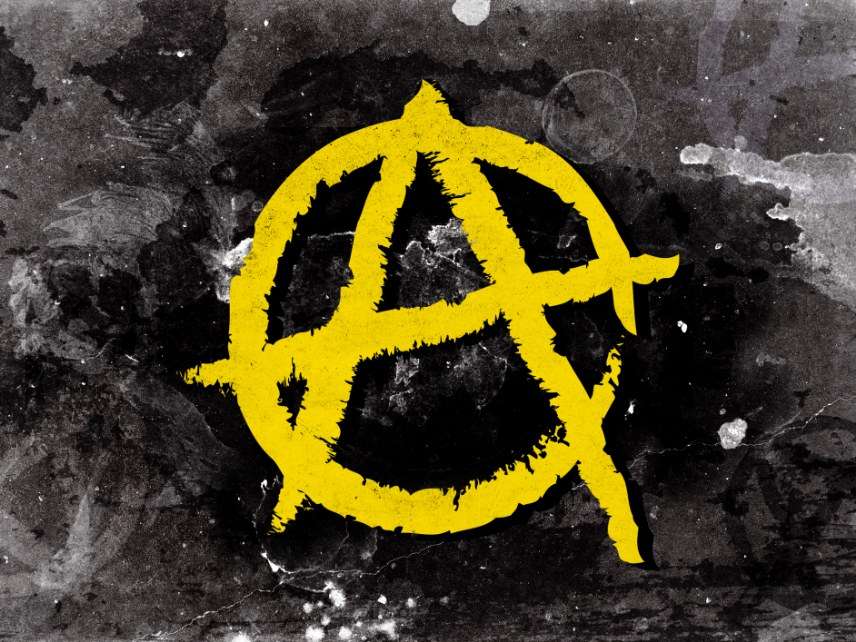Canadian City Leaders Declare Anarchy Symbol to Be Hate Speech
When government has the power to censor, ultimately it will look for excuses to suppress opposition.

The City of Hamilton in Ontario, Canada, seems to have a problem with a small cadre of black-clad anarchist radicals vandalizing storefronts and cars in their community. A group of them caused about $100,000 in damage in a protest in March.
In addition to condemning the violence and trying to track down the direct perpetrators, efforts to fight further violence have taken a weird and troubling turn. The city has ordered a local anarchist group to take the familiar anarchy symbol off its headquarters, designating it as "hate material."
The Tower, a meeting space for anarchists in Hamilton, displayed the anarchist symbol—a capital A in a circle—alongside a paraphrase of a quote from Spanish anarchist Buenaventura Durruti—"We are not in the least afraid of ruins for we carry a new world here in our hearts"—on several pieces of plywood covering smashed windows on the building's facade.
It was the symbol, not the quote, that drew city leaders' ire, which is itself a little odd: The quote is what appears to support the vandalism. The city ordered The Tower to remove the offending symbol as hate speech. Canada, unlike the United States, does have laws that censor hate speech. The laws specifically require that the offending speech advocate genocide or incites hatred against an "identifiable group." The groups that are recognized by Canada's hate speech law are bound by "color, race, religion, ethnic origin, gender identity or expression, or mental or physical disability."
You may be wondering which of these identifiable groups is targeted by the anarchy symbol. So are the police in Hamilton. City officials are pointing to the police as justification for their censorship demands, claiming it's on a list of hate symbols the police have provided. But the police say they do not classify the anarchy symbol as hate speech. According to Canadian media outlet CBC, the police do provide a list of hate symbols and images to the city, but they don't associate anarchists and displays of anarchism as "hate speech."
There is one "identifiable group" anarchists have antipathy for, and that might explain the city's odd behavior better. From the CBC's coverage:
Princewill Ogban, the head of Hamilton's new anti-racism centre, told CBC News he's never really heard of the anarchy symbol being classified as hate material. He did point to one instance in California where a specific anarchist group was linked to white nationalism, but said that group was essentially an outlier.
"Most anarchy groups in the past have been seen as anti-racist or anti-hate," he said. "They are pro-people and anti-government."
Ah, they're anti-government! Subsequently Hamilton Mayor Fred Eisenberger defended classifying the anarchy symbol as hate speech Wednesday regardless of what Canada's law actually says. From the Hamilton Spectator:
"Certainly the anarchists that have locally presented themselves have done things that would be considered to be inappropriate, so if you tie the two of them together, I would say that's a symbol of destruction and mayhem and causing a crisis to a particular area," Eisenberger said Wednesday. "Is that hateful? I think it is."
And that quote is one of many reasons why laws against hate speech are so dangerous. The natural inclination of many government officials when given the power to decide what sort of speech and communication is out of the bounds of the law is to game the system to protect themselves from ideological opponents and critiques.


Show Comments (70)